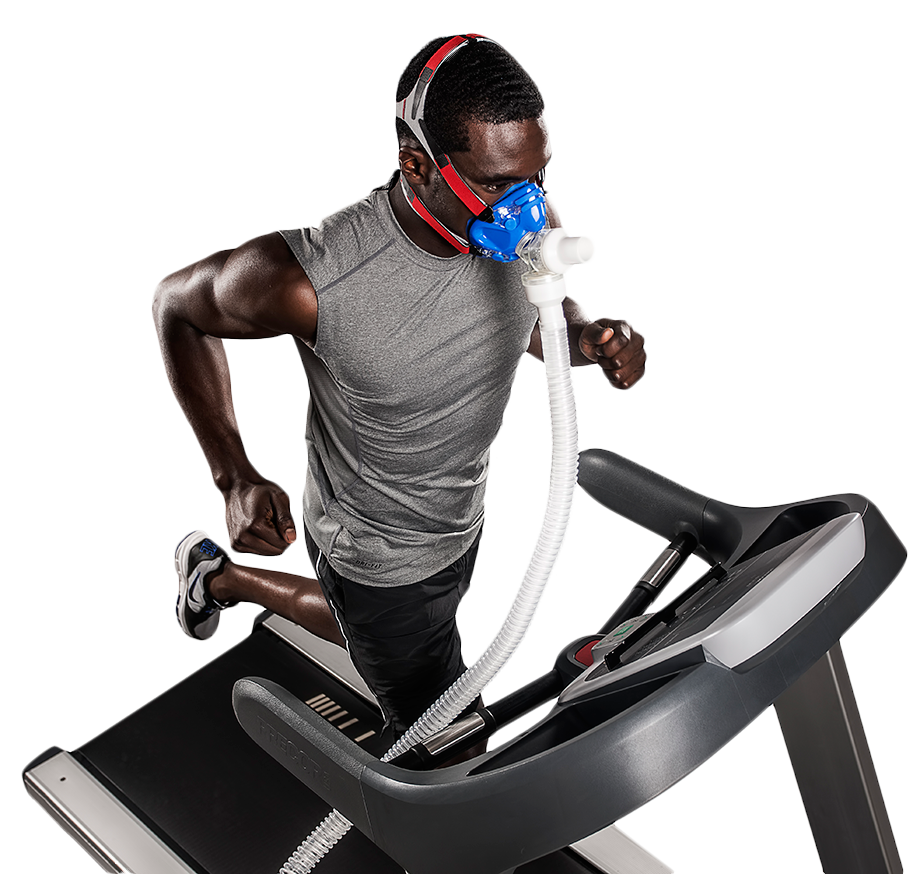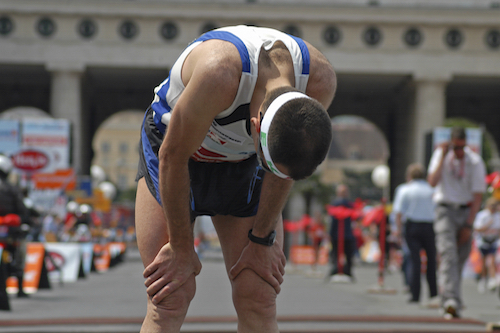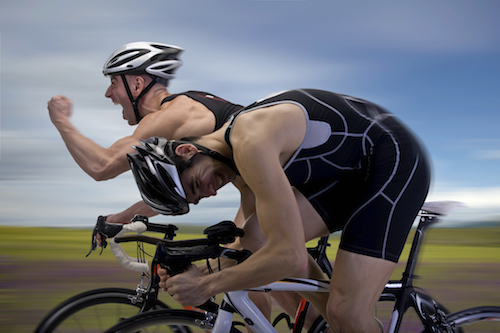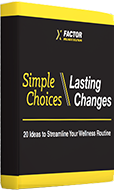VO2 Max Assessment: Taking Your Workouts from Good to Great!
Cycling Success: Steve's VO2 Max Story
Steve is a busy professional that works in an office all week, but enjoys cycling on the weekends when he has time. He isn’t a competitive cycler most of the year, but enjoys doing the MS150 bike ride for charity each year. During the off season, he works on maintaining his lean mass, but the months before the big ride he hits the spin classes and long weekend rides hard. Steve wanted to improve on his last years ride time during cycle season, but didn’t know where to start. Steve decided that a resting metabolic rate (RMR) and a VO2 Max assessment sounded like a good idea to find out how many calories he needed to eat, and how hard he needed to push during the cycle season, but didn’t really understand what it all meant.
VO2 Simply Stands for the volume of oxygen your body consumed at various intensity levels. The greater the amount of work you do, the more oxygen is required to produce energy aerobically (using the Krebs Cycle aka Citric Acid Cycle). Since there is a direct relationship between oxygen consumption (VO2) and calories burned, you can determine how many calories your body is burning at different intensity levels. This can be very helpful information if you are trying to improve your performance and want to know how many calories you need while performing your desired activity or sport.
 I have heard about Aerobic Threshold. What is it exactly?
I have heard about Aerobic Threshold. What is it exactly?
At low intensity levels, your heart and lungs can supply all the oxygen your body needs in order to maintain an aerobic metabolism. The intensity level at which your heart and lungs can no longer keep up with oxygen consumption is called your Aerobic Threshold (AeT). Activity levels that are above your aerobic threshold will cause anaerobic (non-oxygen consuming) energy pathways to start to operate. The greater your VO2 at your aerobic threshold, the greater your potential for high performance. To put it simply, the more you can move, the more you can do.
So, now I understand Aerobic Threshold; but I have heard of something called Anaerobic Threshold. What’s the difference?
At high levels of intensity where your body exceeds it’s aerobic threshold, it must shift metabolic pathways to a non-oxygen dependent system called the anaerobic system, which has the by product of some energy production (less than aerobic) and lactic acid. This energy system shift from aerobic to anaerobic is called the Anaerobic Threshold (AT). When you exercise above your AT, your body becomes more acidic, which will cause your muscles to burn and fatigue, your heart will beat faster to try to deliver more oxygen, and you will begin to breath harder and faster to absorb more oxygen and expel more carbon dioxide to bring your blood pH back to a normal range.
To put is simply, above your AT, you will fatigue and eventually not be able to perform. This is why for the athlete or competitor, knowing and pushing up your anaerobic threshold is important in improving performance.
 What do “Workout Zones” mean and why are those numbers helpful?
What do “Workout Zones” mean and why are those numbers helpful?
The VO2 Max assessment not only gives you your performance numbers like aerobic and anaerobic threshold, but it also gives you helpful caloric data at different levels of exertion using heart rate as a landmark.
At low intensity, your body is using completely aerobic energy sources. This zone is best for fat burning. Your heart and lungs easily provide the needed oxygen for your activity. At moderate intensity, your body increases the amount of anaerobic energy needed. Your heart and lungs are more challenged to meet the oxygen demand, but you can maintain this level of activity for a long time. This zone is best for endurance training. At high intensity, your body is heavily relying on anaerobic energy sources; therefore you will not be able to maintain this level of exertion for long periods of time. Finally, at peak intensity, you are working at maximal exertion such as in a sprint.
Knowing these zones of intensity can give you target of exertion depending on your specific goals. For weight loss and general conditioning, it is good to spend a bulk of your efforts in low to moderate intensity zones. These intensity levels will maintain aerobic metabolism and maximize calories liberated from stored fat. For performance improvement you should push yourself into the high and occasionally peak intensity zones. These higher intensity levels will burn more total calories, but a higher percentage of these calories will come from more nutrient dense sources such as muscle. Knowing your goals will help you determine how intensely you should exercise, and how many calories you will be burning while you do.
So…Now what do I do with all this information?
The bottom line is that the higher VO2 Max number, the higher your ability to intensely exercise. To achieve a high VO2 Max, a person must have a fit heart and lungs and significant lean mass that is well conditioned. If you push yourself near your maximum intensity level, your VO2 Max can be improved; therefore your performance can be improved. The VO2 Max assessment gives you the numbers you need to see your level of performance improvement.
The VO2 Max assessment will also give you an idea of how many calories you are burning while exercising. This number, along with your resting metabolic rate, will tell you how many calories you need in order to fuel your body and recover adequately.
Back to Steve:
Upon receiving his RMR and VO2 Max numbers, Steve took action. He formed a meal plan based on the calorie requirements recommended on his RMR and VO2 Max data, which fueled his workouts and aided in his post workout recovery. He also pushed up his training heart rate, which raised his anaerobic threshold and allowed him to bike harder, longer. On race day, he was fueled up, and ready to go and improved on all his previous race time. Steve is looking forward to beating his new “best time” next year.
 By :Matt Trudo MS, BSN
By :Matt Trudo MS, BSN
Resources:
Korr Medical: www.korr.com
Livestrong: www.livestrong.com
Latest X Factor post
Is your body saying you're old, but your mind isn't willing to give in? If you've ever felt discouraged by the challenges of health & fitness after 40, we've got a few tips, and a toolbox to help.
View BlogReceive "20 Ideas to Streamline Your Wellness Routine."
 Sign up for our "Weekly Wellness Tip" and get your free report "Simple Choices, Lasting Changes: 20 Ideas to Streamline Your Wellness Routine." The report gives you simple, smart ideas that can help you feel better and be more productive during your work day.
Sign up for our "Weekly Wellness Tip" and get your free report "Simple Choices, Lasting Changes: 20 Ideas to Streamline Your Wellness Routine." The report gives you simple, smart ideas that can help you feel better and be more productive during your work day.

Leave a Comment
Comments (0)